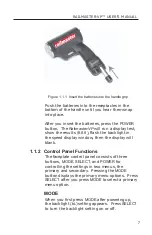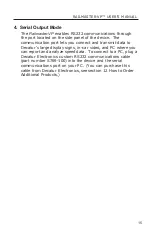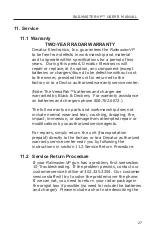
RAILMASTER-VP™ USER’S MANUAL
16
5. Performance Tips
Understanding potential radar interference and what to do
when it occurs can greatly increase the radar’s performance.
5.1 How Radar Works
Determining a vehicle’s speed, begins with the radar
antenna transmitting and directing a beam of microwave
energy (radio waves) at an approaching (or departing)
target vehicle. When energy from this beam strikes a
moving vehicle, a small amount of the beam is reflected
back to the antenna. The reflected signal frequency shifts
by an amount proportional to the speed of the target
vehicle. This is known as the Doppler effect. The radar
device then determines the target vehicle’s speed from the
difference in frequency between the reflected and
transmitted signal.
5.2 Interference Sources and Remedies
When properly installed and operated, Doppler radar
technology is extremely accurate and reliable. However,
variations in the environment can cause situations and
circumstances, which can cause spurious (erratic and
unusually low or high) speeds to display. Signs that a
speed is spurious can include the following
characteristics:
•
A reading appears when no target vehicle is in the
operational range of the antenna.
•
A target vehicle enters the operational range
overrides the interference signal, causing the displayed
speed to change suddenly to the vehicle’s speed.
•
Speeds are irregular and do not provide a valid
traffic history.
















































